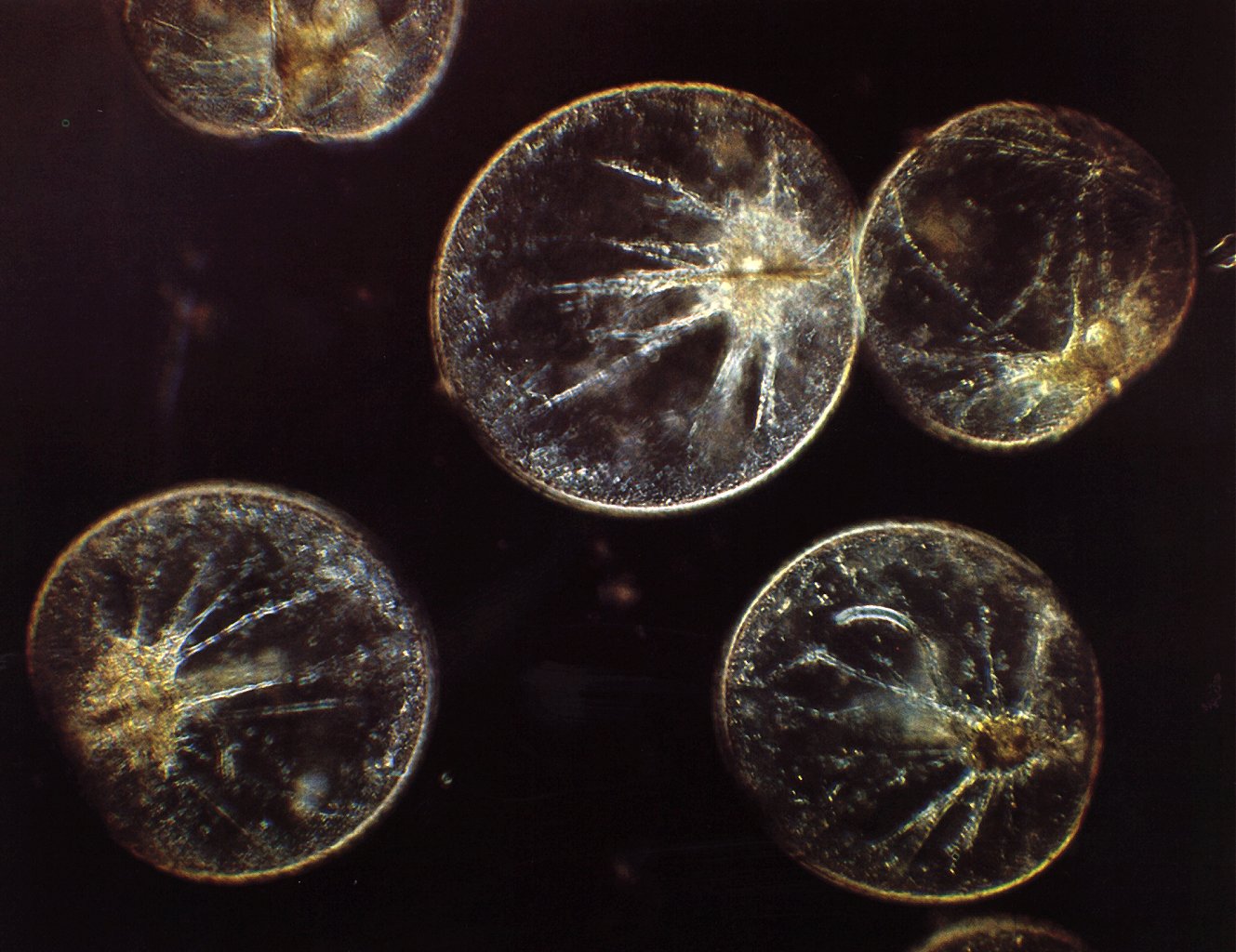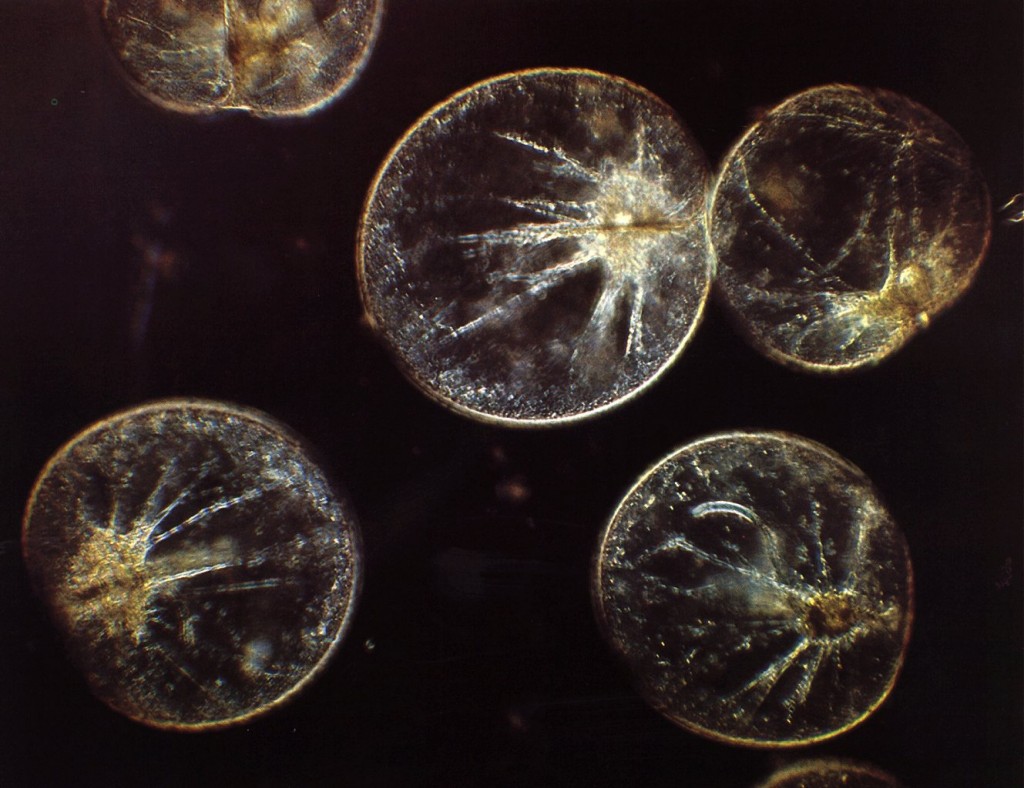December 27, 2014 – When an oil spill happens in the ocean much of it gets ingested by small marine creatures like the ones seen in the picture below.
These are heterotrophic dinoflagellates. This particular species is nocturnal. But dinoflagellates and diatoms dominate zooplankton that along with phytoplankton, represent the bottom of the ocean food chain. Everything in the ocean is ultimately nourished by them. So they are very important to ocean ecosystems.
But more alarmingly interesting is what happens to them when an oil spill occurs such as the Deepwater Horizon disaster of 2010 in the Gulf of Mexico. Shortly after that spill, articles appeared indicating the contribution of oil-spill eating bacteria to clean the site. Referred to as nature’s janitors, it was commonly thought that biology could help fight a disaster of this magnitude. But what if biology could spread the toxicity of the spill even further?
In a paper appearing in the journal, Nature, published December 19th and authored by scientists from University of Texas Austin and Technical University of Denmark, the researchers cast serious doubt on our previous assumptions. They note that even oil spills treated with chemical dispersant suspend the hydrocarbon as small droplets in the water column, and those droplets are small enough to be ingested by creatures like the one you see above because they cannot distinguish the oil from real food. That’s because the droplets mimic the size of their normal food.
Initially of course at the site of a spill oil concentrations are so high that much of the zooplankton and phytoplankton dies. But as dispersant is applied the oil breaks up into finer droplets with secondary implications for surviving and new blooms of dinoflagellates. Thinking this is food the creatures gobble up the oil. This ingestion leads to many consequences one of which is the entry of microscopic hydrocarbons into the entire ocean food chain.
The authors note, “dinoflagellate cells containing crude oil can be prey for consumers, such as crustacean zooplankton and fish larvae which would enhance biotransfer of highly toxic, low-solubility petroleum hydrocarbons through marine food webs during crude oil spills.”
In other words dinoflagellates in making the mistake of thinking oil droplets are food unwittingly spread the oil throughout the food chain.
But it doesn’t end there. The authors of the study calculate that a single bloom of dinoflagellates like the ones seen above “has the potential to ingest, in one day, most of the dispersed crude oil droplets in the area covered by the bloom when oil concentrations are ~1-2 ppm [parts per million].”
What happens to that ingested oil? Well it appears that dinoflagellates have a fairly high tolerance to crude oil and dispersant once the levels of concentration decline. They can digest some of it but in processing it they also defecate the oil. These eliminated fecal pellets contain insoluble portions of the crude oil and it is not fully understood how its composition is altered by dinoflagellate digestion. The researchers suggest further study is needed. But one thing was noted by the researchers. The fecal pellets do not remain suspended in the water column because in digestion the oil loses its buoyancy. So the material sinks further into the water column bearing its toxic oil load.
Why is this significant? In the past scientists saw the digestion of oil by zooplankton as a natural means of eliminating oil spills. But contaminated fecal pellets descending to the depths was not considered as a source of secondary oil pollution in the marine environment.
In their conclusions, the researchers state, “our study highlights that ingestion of crude oil by heterotrophic dinoflagellates is a significant path by which crude oil pollution enters marine food webs and an important mechanism affecting the fate of dispersed crude oil in the sea after oil spills. Our results emphasize the need to understand and quantify crude oil ingestion and defecation by zooplankton, both protozoans and metazoans, to determine the fate and impact of petroleum pollution in marine environments.”
In other words, we don’t know, in the aftermath of an oil spill, after cleanup and after natural biological processes have worked on the oil, what is the full extent and duration of the environmental damage.










